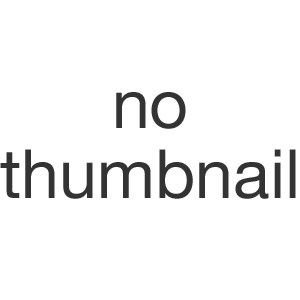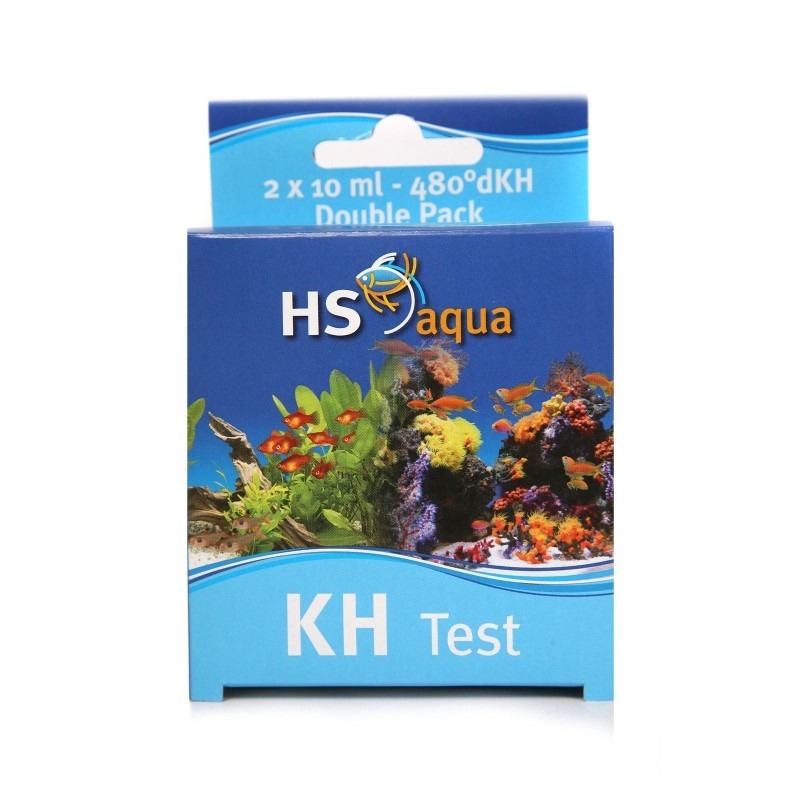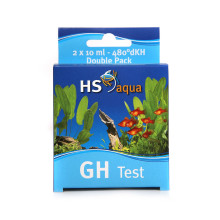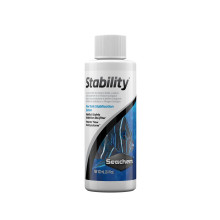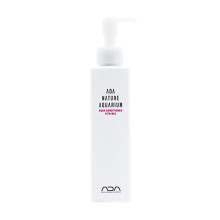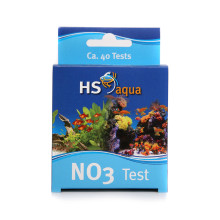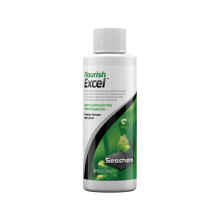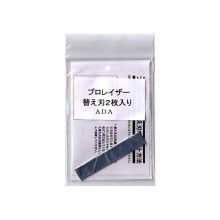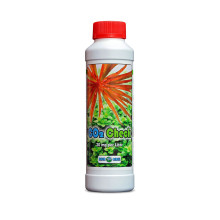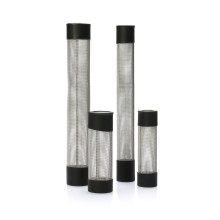HS Aqua KH test
Bicarbonates (KH) buffer the water against pH changes. Due to biological processes in the water, the KH value and pH value can change over time. Since all aquarium and pond inhabitants react very sensitively to changes in the pH value, regular monitoring of the stabilizing KH value is also necessary.
What is the KH value?
The KH value symbolizes the buffering capacity of the water. The KH value is also called the carbonate hardness of the water and is an expression for the ratio between the amount of carbonates, bicarbonates and dissolved carbon dioxide. Carbonate and bicarbonate are salts of carbon dioxide and, depending on the pH value, can merge or even react to form carbon dioxide. At a high pH value, almost exclusively carbonate is present. At a low pH value, mainly dissolved carbon dioxide is available. In the pH range that is ideal for most fish, bicarbonate mainly occurs. If biological processes produce substances in the aquarium that would cause the pH value to rise, bicarbonate will first react to form carbonate. Conversely, if substances are produced that lower the pH value, carbon dioxide dissolved from bicarbonate is first produced. In both cases, the pH value of the water does not change until most of the bicarbonate has been consumed. The bicarbonate therefore keeps the pH value stable
The KH value is by definition the amount of carbonates and bicarbonates bound to calcium and magnesium. Calcium and magnesium together form the total hardness or GH value. Because other carbonates may also be present in the water, the measurement of the KH value may be higher than the GH value. That is why the term 'acid binding capacity' (ZBV value) is often used in the new literature. This value indicates how much acid can be formed in the water before all carbonates are used up. The KH value can easily be converted to the ZVB value by multiplying the KH value by 2.8.
The optimal values depend on the type of aquarium; For a community aquarium, a KH between 3 ºKH and 5 ºKH is ideal. To keep an aquarium with a low pH value for fish, for example, out of soft and acidic water, the KH value should be approximately 2 ºKH – 3 ºKH. Aquariums with fish from Lake Malawi or Lake Tanganyika should preferably have a higher KH value, >7 ºKH. In natural seawater the KH value is around 8 °KH. We recommend using slightly higher values in seawater aquariums (10°KH to 12°KH). Stable pond water is obtained at KH values between 5°KH and 10°KH.
Adjusting the KH value
A reduction in the KH value is relatively easy to achieve. Adding pH-lowering preparations such as HS aqua pH/KH Minus or HS aqua Oak Extract also causes the KH value to drop.
The KH value can be increased by adding HS aqua KH Plus. Calcareous decoration and filter materials can also stabilize the KH value.
This test reliably and accurately measures the KH value in ponds, freshwater and seawater aquariums
Data sheet
- Product type:
- Water quality
Water test - Productname:
- pH-test
- Manufacturer:
- HS Aqua
- Content:
- 2x 10ml (ca. 140 test)
-
Frequently purchased together

